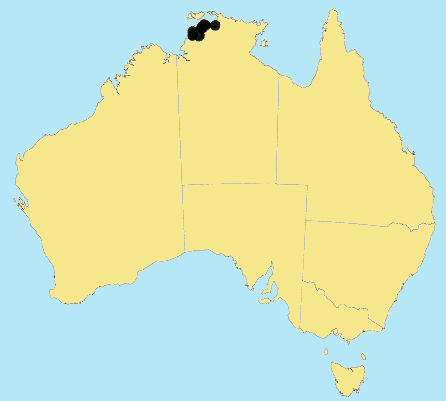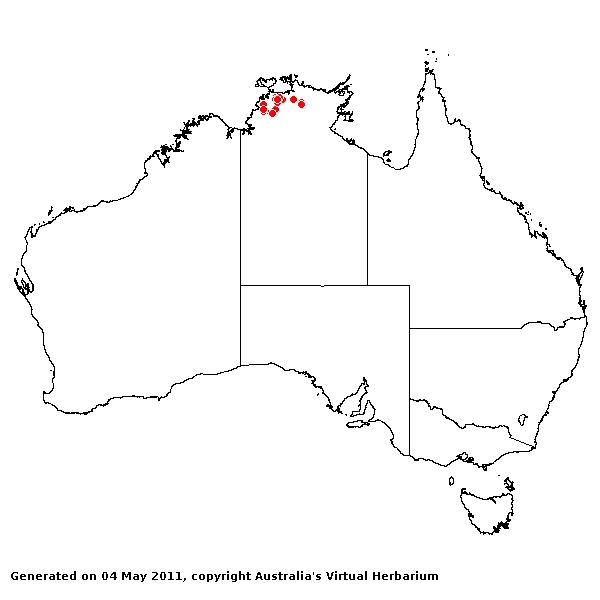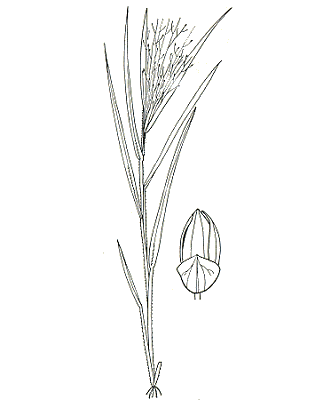Panicum luzonense* J. & C. Presl. Rel. Haenk. 1: 308 (1830).
Classification. (GPWG 2001) : Subfamily Panicoideae. Paniceae.
Type of Basionym or
Protologue Information: Philippine Islands: Luzon:, Haenke s.n. (HT:
PR (fragm., LE)).
Recent synonyms:
P. cambogiense.
Key references
(books and floras): [2002] D.Sharp & B.K.Simon, AusGrass, Grasses of
Australia.
Habit. Annual.
Rhizomes absent. Stolons absent. Culms erect or geniculately ascending or
decumbent, 3–120 cm tall, 5–8 -noded. Mid-culm internodes glabrous or
pubescent. Mid-culm nodes pubescent. Lateral branches sparsely branched.
Leaf-sheaths hairy. Leaf-sheath auricles absent. Ligule a fringe of hairs,
1.5–2 mm long. Leaf-blades linear or lanceolate, 7–25 cm long, 6–15 mm wide.
Leaf-blade surface smooth, glabrous or indumented.
Inflorescence.
Inflorescence compound, a panicle. Panicle ovate, 15–50 cm long, evenly
furnished.
Spikelets.
Spikelets pedicelled. Fertile spikelets 2-flowered, the lower floret barren
(rarely male), the upper fertile, comprising 1 basal sterile florets,
comprising 1 fertile floret(s), without rachilla extension, elliptic or oblong,
dorsally compressed, 1.5–2.6 mm long. Rhachilla internodes elongated between
glumes.
Glumes. Glumes
dissimilar, thinner than fertile lemma. Lower glume ovate, membranous, without
keels, 3–9 -nerved. apex obtuse. Lower glume apex muticous. Upper glume elliptic or ovate,
1.3–2.5 mm long, membranous, without keels, 7–11 -nerved. Florets. Basal
sterile florets 1, male or barren, with palea. Lemma of lower sterile floret
100 % of length of spikelet, membranous, 5–9 -nerved, mucronate.
Fertile lemma 1.3–2.2
mm long, without keel, 5 -nerved. Lemma apex mucronate. Anthers 3. Grain 1.4 mm
long.
Continental
Distribution: Temperate Asia, Tropical Asia, Australasia, and Pacific.
Australian
Distribution: Northern Territory.
Northern Territory:
Darwin & Gulf.
Notes.
Diagnostic features of P. luzonense include the anastomising nerves on
the glumes and lower lemma, spikelet length, presence of a lower palea and the
hairy sheaths.
Introduced. Occurs in
the Darwin area of the N.T. as a weed in rice fields. Geobotanical
distribution: Arnhem. Native to India and Malesia. In tropical and subtropical
sub-humid woodlands and coastal grasslands. Flowers Jan.-May.




